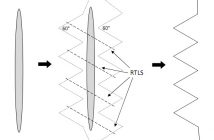You are at:Home»Capsula eBurnea»KAWASAKI DISEASE: AN IMPORTANT CAUSE OF CARDIOVASCULAR MORBIDITY AND MORTALITY IN PEDIATRICS
Kawasaki disease (KD) is an acute febrile, systemic vascu- litic sindrome affecting medium-sized arteries, unknown aetiology, probably multifactorial, which affects mainly in- fants and early childhood. KD is characterized by fever, conjunctivitis nonexudative bilateral conjunctivitis, ery- thema lips and oral mucosa, changes in the extremities, erythematous rash and cervical lymphadenopathy. It com- bines risk of developing ecstasies or aneurisms of the coro- nary arteries that may lead to ischemic heart disease, myo- cardial infarction or sudden death. Treatment with intrave- nous immunoglobulin is generally effective but its mecha- nism of action is still unclear. The development of a diagnostic test, a more specific treat- ment and ultimately the prevention of this potentially fatal disease in children from all depend on continued progress in understanding the etiopathogenesis of this fascinating disease. The purpose of this review is to outline the main hypothesis on the genesis of KD, diagnostic criteria, treatment options currently available and the importance of follow-up. KEYWORDS: Vasculitis, Immune Abnormalities, Fever, Aneurisms, Echocardiography.
Related Posts
-
-

-
